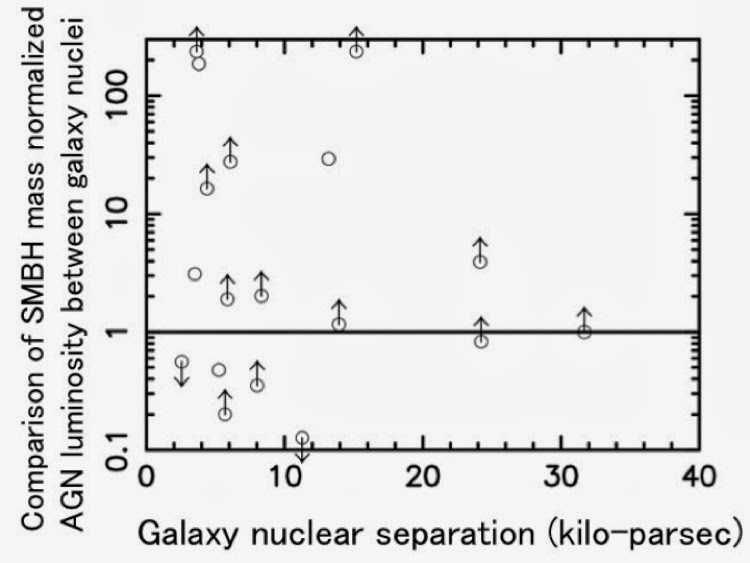A new ScienceCast video explores the strange quantum realm of NASA's new Cold Atom Lab.Play it
Everyone knows that space is cold. In the vast gulf between stars and
galaxies, the temperature of gaseous matter routinely drops to 3
degrees K, or 454 degrees below zero Fahrenheit.
NASA researchers are planning to create the coldest spot in the known universe inside the International Space Station.
“We’re going to study matter at temperatures far colder than are
found naturally,” says Rob Thompson of JPL. He’s the Project Scientist
for NASA’s Cold Atom Lab, an atomic ‘refrigerator’ slated for launch to
the ISS in 2016. "We aim to push effective temperatures down to 100
pico-Kelvin."
100 pico-Kelvin is just one ten billionth of a degree
above absolute zero, where all the thermal activity of atoms
theoretically stops. At such low temperatures, ordinary concepts of
solid, liquid and gas are no longer relevant. Atoms interacting just
above the threshold of zero energy create new forms of matter that are
essentially ... quantum.
Quantum mechanics is a branch of physics that describes the
bizarre rules of light and matter on atomic scales. In that realm,
matter can be in two places at once; objects behave as both particles and waves; and nothing is certain: the quantum world runs on probability.
“We’ll begin,” says Thompson, “by studying Bose-Einstein Condensates.”
In 1995, researchers discovered that if you took a few million
rubidium atoms and cooled them near absolute zero, they would merge into
a single wave of matter. The trick worked with sodium, too. In 2001,
Eric Cornell of the National Institute of Standards & Technology and
Carl Wieman of University of Colorado shared the Nobel Prize with
Wolfgang Ketterle of MIT for their independent discovery of these
condensates, which Albert Einstein and Satyendra Bose had predicted in
the early 20th century.
If you create two BECs and put them together, they don't mix like
an ordinary gas. Instead, they can "interfere" like waves: thin,
parallel layers of matter are separated by thin layers of empty space.
An atom in one BEC can add itself to an atom in another BEC and produce –
no atom at all.
“The Cold Atom Lab will allow us to study these objects at perhaps the lowest temperatures ever,” says Thompson.
The lab is also a place where researchers can mix super-cool
atomic gasses and see what happens.
“Mixtures of different types of
atoms can float together almost completely free of perturbations,”
explains Thompson, “allowing us to make sensitive measurements of very
weak interactions. This could lead to the discovery of interesting and
novel quantum phenomena.”
The space station is the best place to do this research.
Microgravity allows researchers to cool materials to temperatures much
colder than are possible on the ground.
Thompson explains why:
“It’s a basic principle of thermodynamics that when a gas expands,
it cools. Most of us have hands-on experience with this. If you spray a
can of aerosols, the can gets cold.”
Quantum gases are cooled in much the same way. In place of an aerosol can, however, we have a ‘magnetic trap.’
“On the ISS, these traps can be made very weak because they do not
have to support the atoms against the pull of gravity. Weak traps
allow gases to expand and cool to lower temperatures than are possible
on the ground.”
No one knows where this fundamental research will lead. Even the
“practical” applications listed by Thompson—quantum sensors, matter wave
interferometers, and atomic lasers, just to name a few—sound like
science fiction. “We’re entering the unknown,” he says.
Researchers like Thompson think of the Cold Atom Lab as a doorway
into the quantum world. Could the door swing both ways? If the
temperature drops low enough, “we’ll be able to assemble atomic wave
packets as wide as a human hair--that is, big enough for the human eye
to see.” A creature of quantum physics will have entered the
macroscopic world.
And then the real excitement begins.
For more information about the Cold Atom Lab, visit coldatomlab.jpl.nasa.gov
Credits:
Author: Dr. Tony Phillips
Production editor: Dr. Tony Phillips
Credit: Science@NASA






















